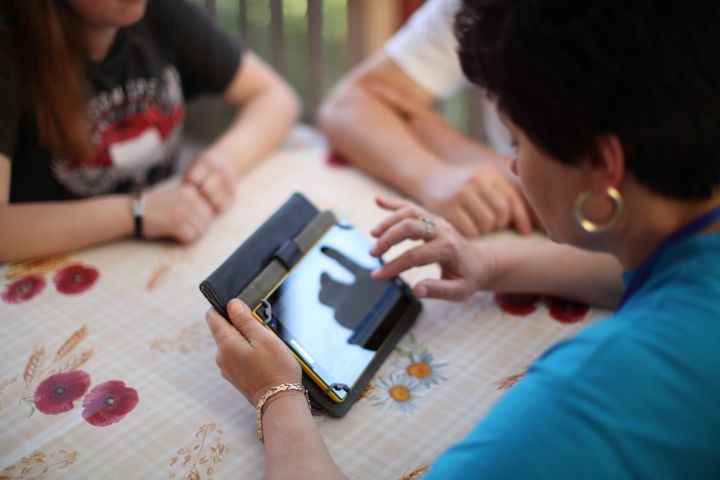Last week, Siddhartha Jha, our AI and Digital Program Manager, visited two highly anticipated events that brought together an international community of AI thinkers and digital innovators to discuss the future of healthcare. Here Sid reflects on his key learnings and what can be said for the potential of technology and AI in healthcare transformation.
It was an exciting week in Basel for AI and healthcare. The events kicked off with DayOne’s annual conference: Shaping the Future of Health – Patients Included, where I joined a unique mix of patients and innovators, in a collaborative space, to demonstrate how digital tech and AI could be used to improve health services and delivery.
For the first time, we heard the voices of patients amplified, loud and clear, across all keynotes and panel discussions. This was continued into the open innovation workshops where patient and experts joined other participants to identify potential “superheroes” in healthcare that will hopefully have a lasting impact in the field.
DayOne conference was followed by two days of world class talks and demos at the first Intelligent Health conference that Fondation Botnar is proud to have supported. Drawing over 1,600 attendees from across the world, the congress center was alive as audiences gathered for debates around the latest developments in AI, big data and healthcare. Some of many inspiring examples we learned about included AI-enabled face recognition technology which supports the detection of genetic disorders and a new epidemic preparedness system by WHO (EIOS), which uses data and predictive analytics to enable faster responses to disease outbreaks.
Digital solutions that leverage the power of AI and big data provide us with a tremendous opportunity to empower health workers and patients alike. Especially when we know from the WHO that the world is grappling with a shortage of 7.2 million healthcare workers, which is set to grow to about 18 million by 2030 [1]. Furthermore, it is only 1 out of 3 times that an accurate diagnosis is made by health workers in some of the world’s poorest regions [2]. Our partners like D-Tree are a good example to show when talking about the leveraging of this technology. D-Tree are using digital tools in the Safer Deliveries Program in Zanzibar by empowering and informing expecting mothers, linking them with digitally enabled community health workers (CHWs), community drivers, village savings groups and health facilities.
Not only was there fresh inspiration for how we can leverage technology, but at our Fondation Botnar panel on ‘AI, adolescents and universal health coverage’ we had a productive discussion on how the adolescent population represents an important target group and how digital solutions are well-placed to address their needs. Adolescents are so often sidelined in global health debates and policy, yet it’s adolescents who have been the first to adopt new technology and actively go online for health advice. This opens up a wealth of possibilities for technologists, healthcare providers, and governments to really bring relevant healthcare and personalised wellbeing to young people’s fingertips.
We heard from new players that are already addressing this intersection. ConnectMed improves young people’s access to information on chronic diseases and sexual and mental health issues by providing online consultations with doctors and also an AI-enabled chat bot. Another remarkable example came from ClickMedix which trains students from public health schools in Rajasthan to use digital tools to improve diabetes care in local communities, refer them to further care, and promote healthy behaviors.
We were also lucky to spend time with the first cohort of fellows from the African Alliance of Digital Health Networks (African Alliance), which Fondation Botnar supported to attend Intelligent Health 2018. The African Alliance works to ensure that African countries have the support and resources needed to develop strong digital health systems. From discussing about using WhatsApp for social impact in South Africa to mHealth communities of practice in Tanzania – it was great to hear from the innovations and innovators at work across the continent.
While there are many important innovators in the global south, most digital health tools are being developed and targeted towards young people in developed countries. At least half of the world’s population is still unable to access essential health services. To address this gap, we believe it is critical to support home grown solutions, where these tools are developed in low- and middle-income countries (LMICs). Much of this work is complex, requiring collaboration with multiple stakeholders to create enabling environments.
My main takeaway from this past week is the importance of working together. Only together, developing solutions both for and with communities, can we harness technology to improve the health and wellbeing of young people. In these debates we often talk about what is best for patients, without actually bringing them into the conversation. It was a welcome move from DayOne to include patients. My hope is that other organisations developing solutions do the same. While much of the international focus is on the latest trends- such as the recently updated Apple watch – it’s easy to get carried away with excitement for the future. We, as the global health community, need to remember that in many LMICs, the focus still needs to be on access. It is now, in the present, that by harnessing the power of digital technologies and artificial intelligence we can truly make a difference by making healthcare much more effective, affordable and available for all.
References:

